Basic Horse Grooming Guide
Horse grooming tools come in an assortment of styles and types, with each designed for specific tasks. Selecting the right tools for your grooming kit will depend on both your and your horse’s preferences.
- Topics: Basic Care, Grooming, Other Skin Problems, Skin Problems, Slideshow
Share
ADVERTISEMENT
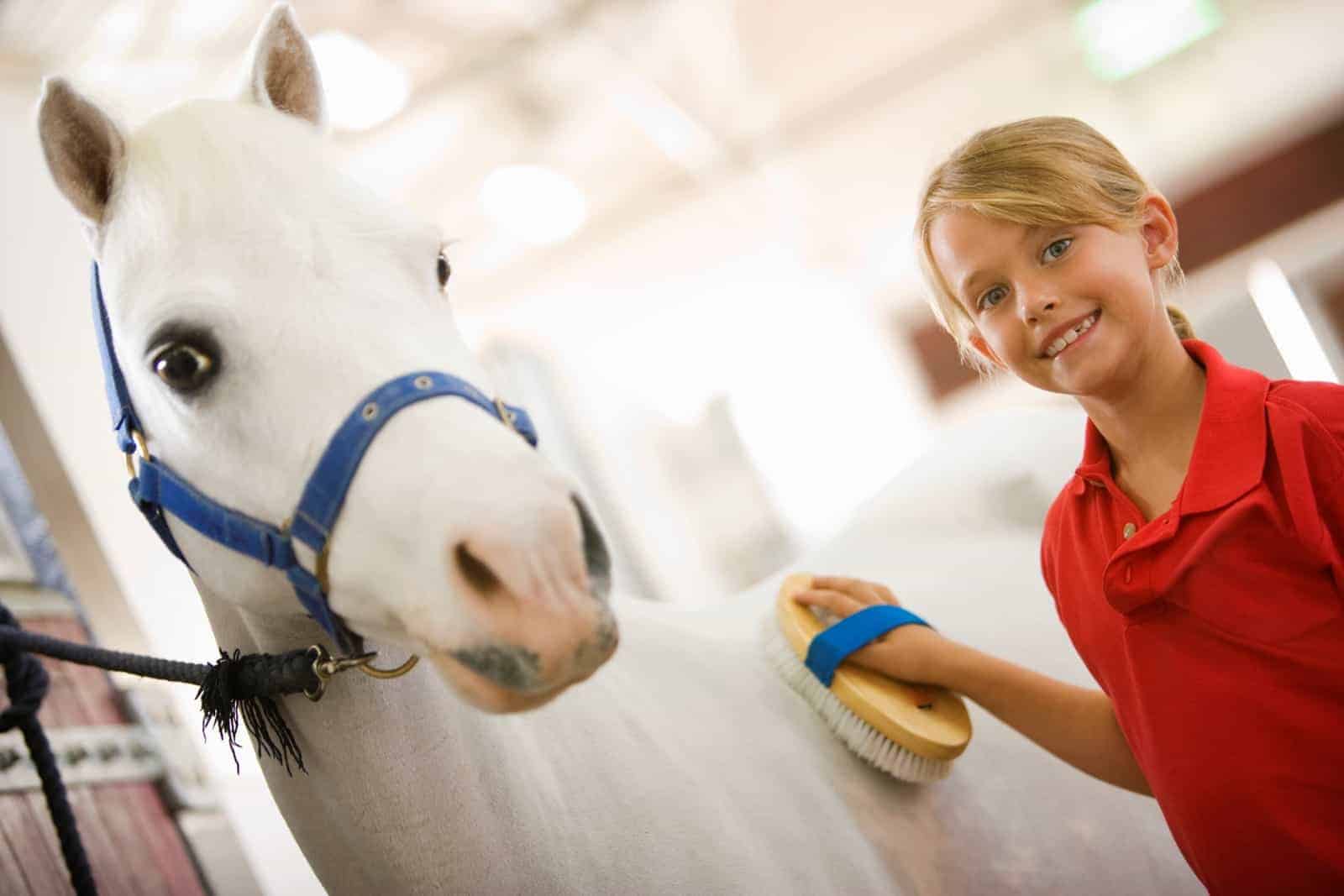
Why Groom a Horse?
Grooming helps improve horses' skin and coat condition and allows us to identify any unusual injuries, skin conditions, or behavioral changes. And grooming before riding is an important way to prevent irritation caused by dirt and debris trapped under tack. Additionally, research shows grooming can serve as a bonding experience for horse and human and produces marked relaxation in both. | Photo: Thinkstock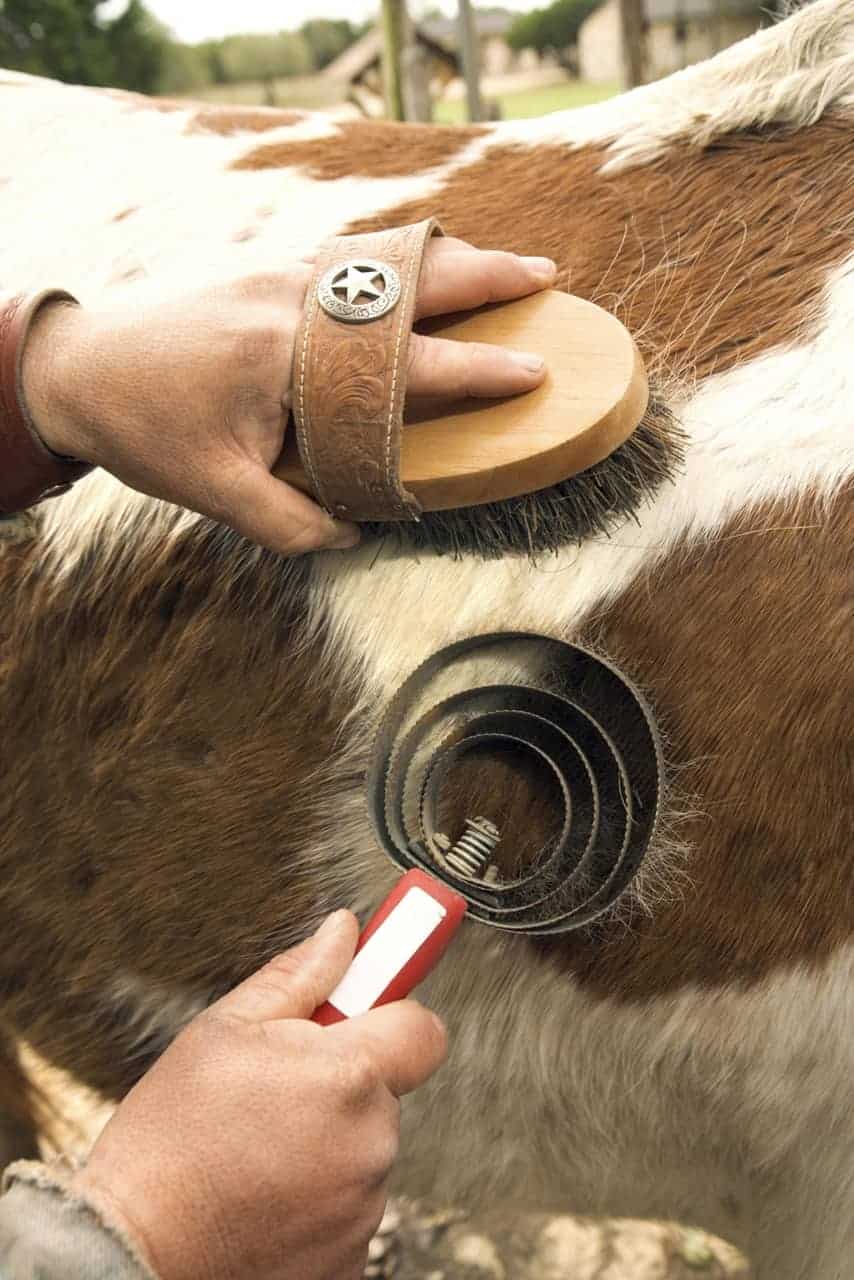
Mud Brush and Metal Curry Comb
A mud brush (top) has stiff bristles (either natural fibers or synthetic) that are useful for removing thick or caked-on mud. Skip the mud brush if your horse isn’t overly dirty. Some people find a metal curry comb (bottom) useful for removing caked-on mud on fleshy areas of horses, such as the shoulder or hind quarters (rather than sensitive areas such as the legs and face), but many horse people reserve it for cleaning off brushes rather than horses. | Photo: Thinkstock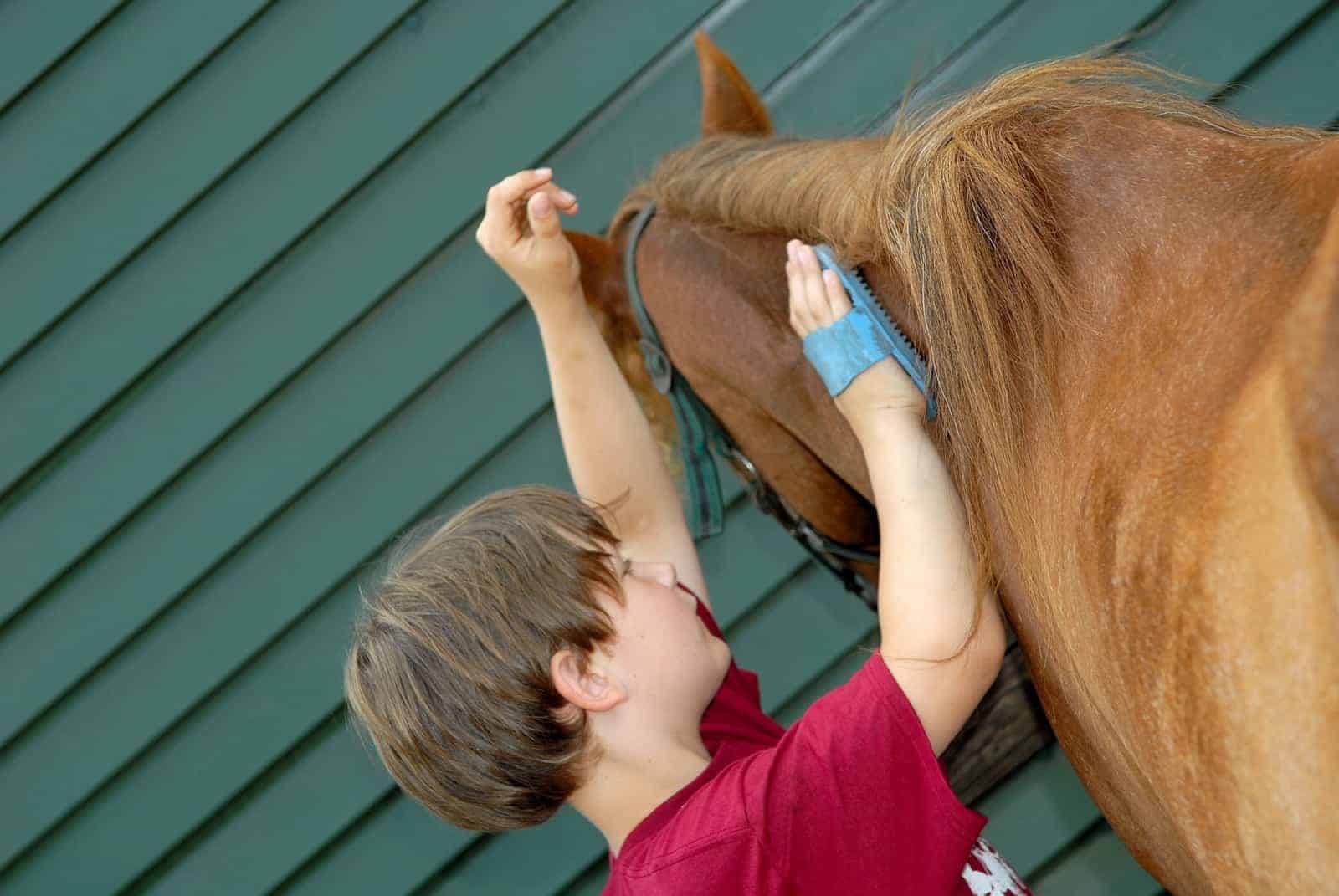
Rubber Curry
A rubber curry is used on fleshy parts of the horse's body in a circular motion to loosen hair, dirt, and dander, and many horses seem to enjoy the massagelike feeling it provides. Avoid using the rubber curry on sensitive parts of the horse, including the face and legs. Alternate tools for currying include rubber mitts. | Photo: Thinkstock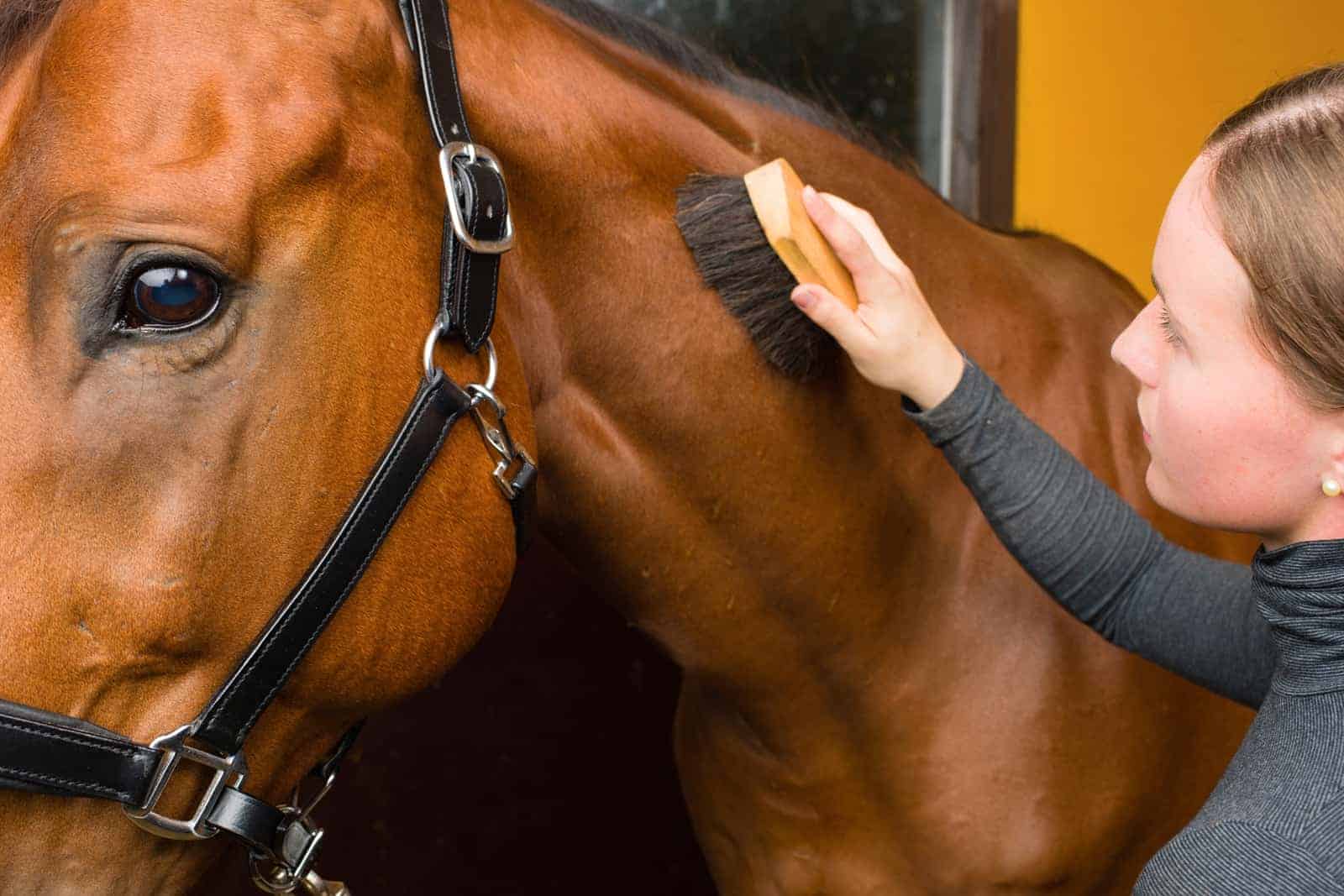
Dandy Brush
The next step in grooming is to remove the hair, dirt, and dander loosened by the rubber curry with a dandy brush. A dandy brush is a versatile horse grooming tool that comes in a variety of bristle types, lengths, and levels of stiffness, ranging from soft natural materials to course synthetic ones. Use this brush in a sweeping motion in the direction of coat growth. | Photo: Thinkstock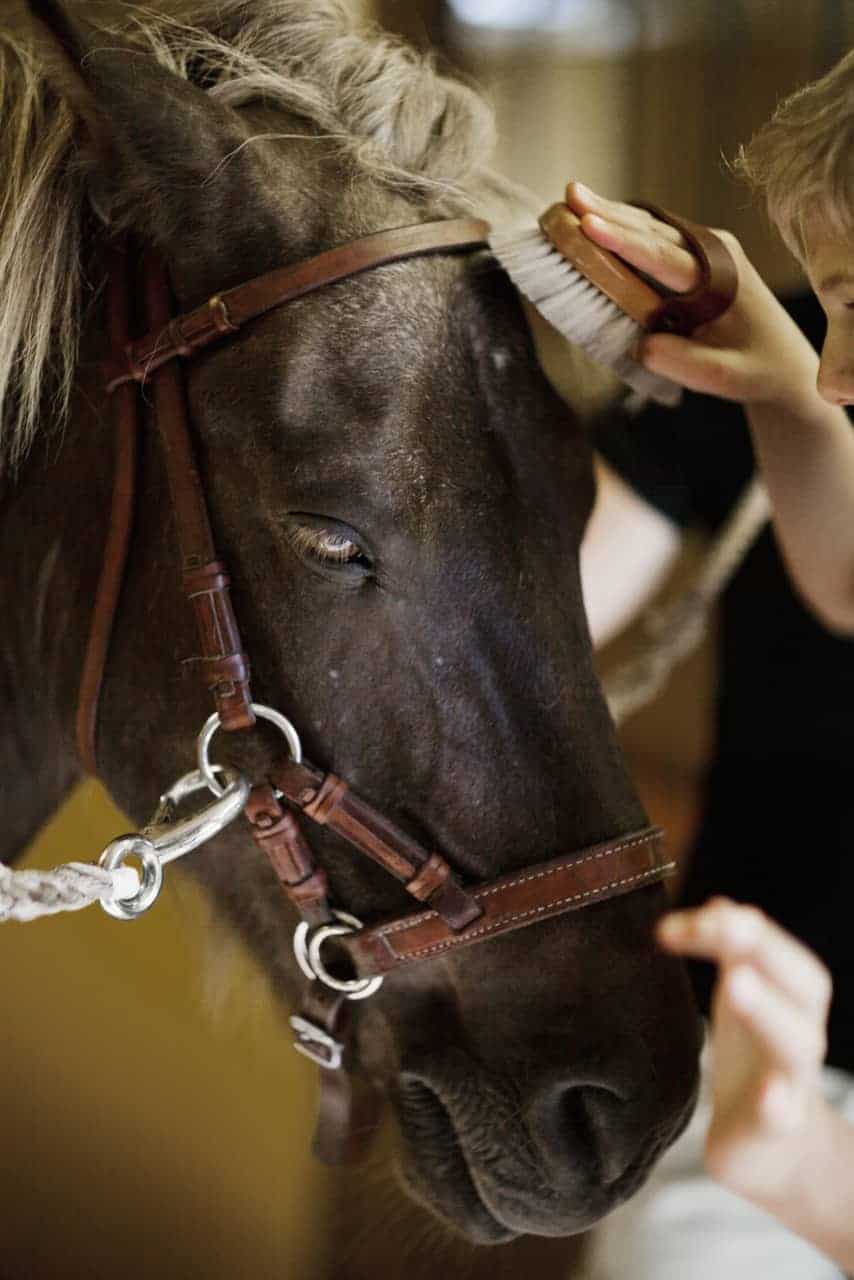
Face Brush
A face brush has soft bristles that are usually made of natural materials such as horsehair. These soft brushes are appropriate for sweeping hair and dirt off a horse's face and gentle enough for use around the eye, nostrils, lips, and jaw. | Photo: Thinkstock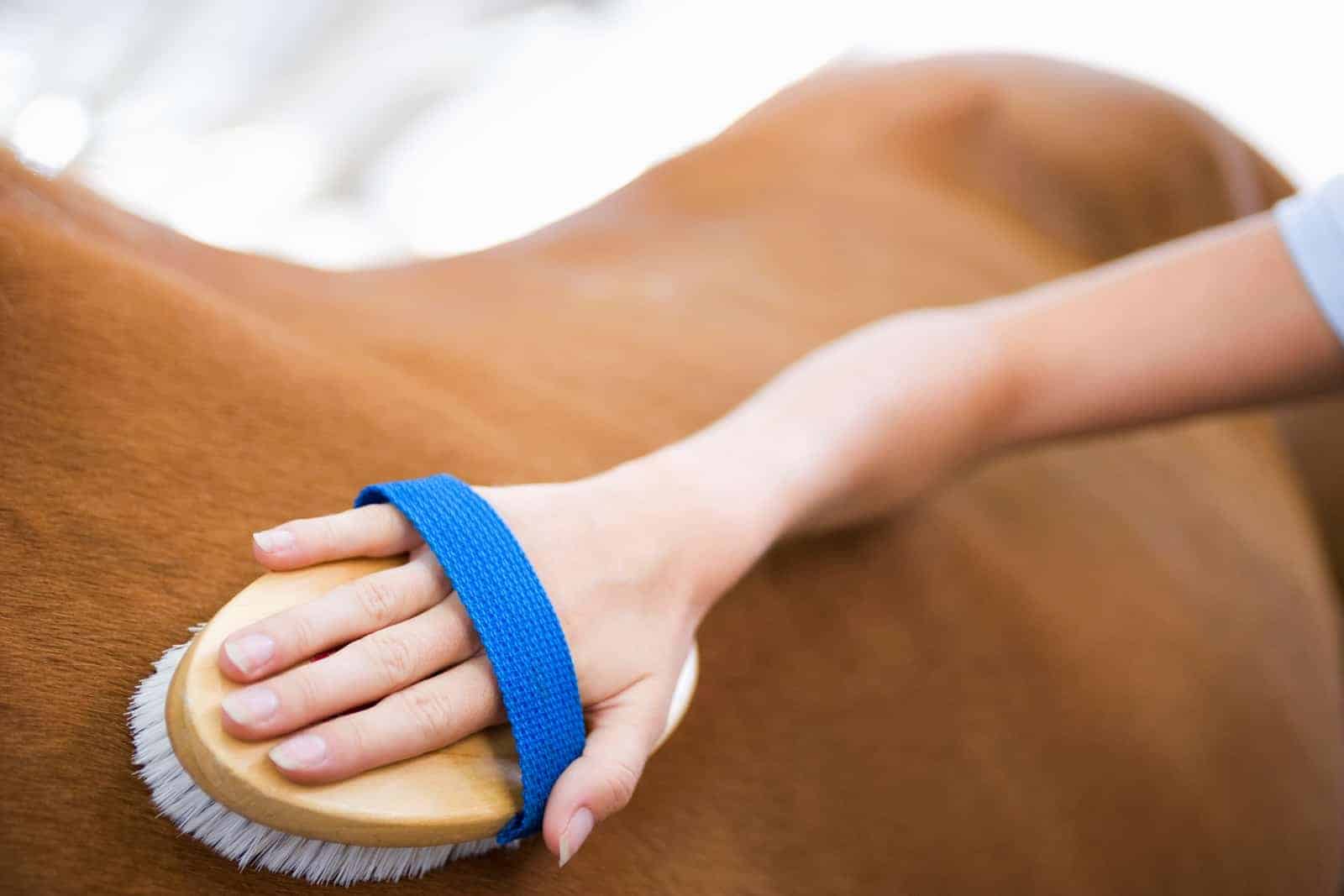
Soft Body or Finishing Brush
A soft body or finishing brush, usually made of natural fibers, is good for grooming sensitive spots, such as the horse’s belly and flank. Bristle length varies in finishing brushes, so select one based on your and your horse’s preference. A quality body brush removes the finest dust particles from a coat and leaves a healthy horse extra shiny and polished. | Photo: Thinkstock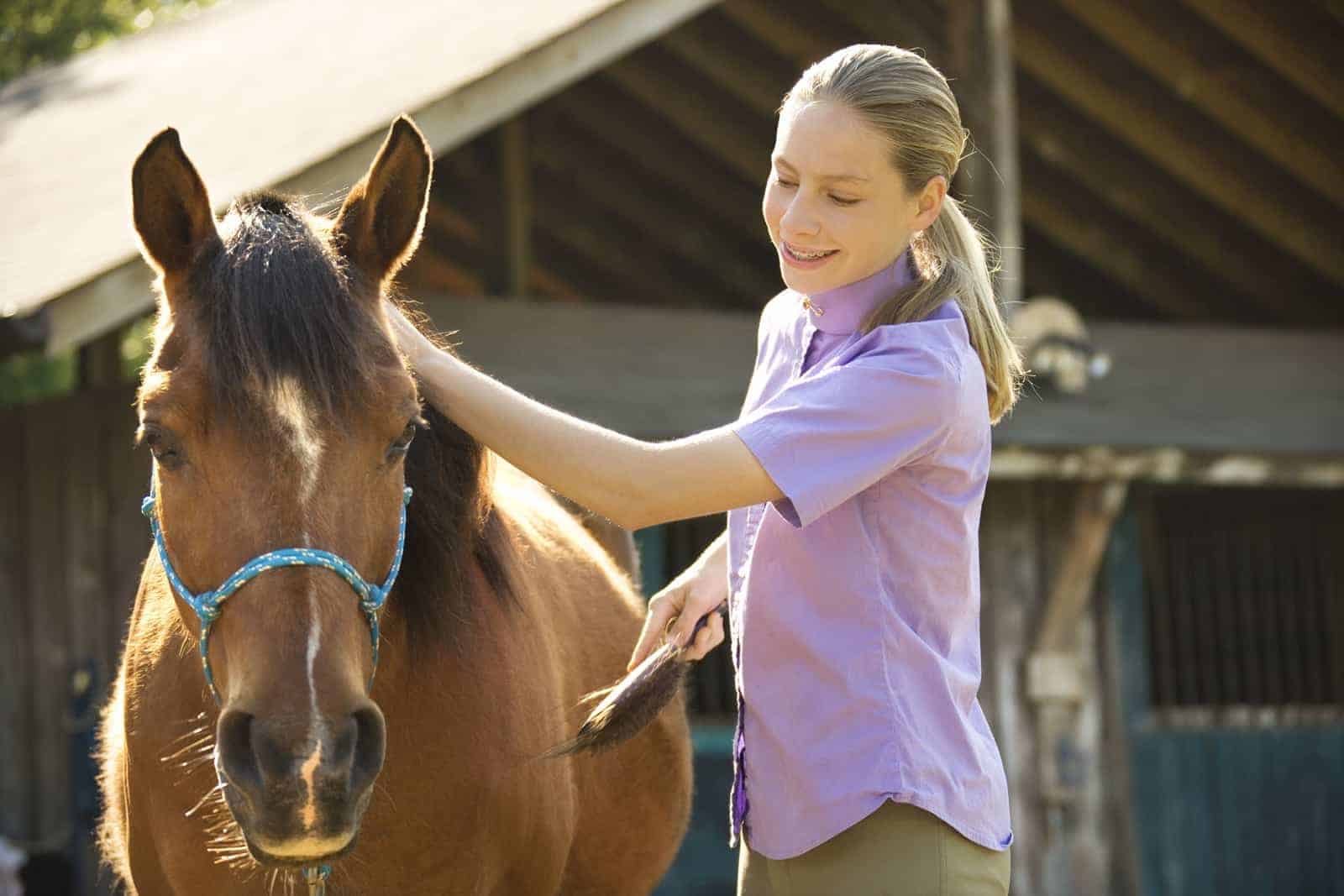
Mane Brush
You can use a bristled brush on a horse's mane as pictured (a strong human hairbrush works) or a mane comb. However, some people opt for finger combing to prevent hair breakage. | Photo: Thinkstock
Tail Rake
How you brush or comb a tail is a matter of preference. Some people prefer to finger-comb only to preserve tail hairs. Others use a brush. A mane-and-tail comb or rake (as shown) also works. Start at the bottom of the tail and work your way toward the tail dock. | Photo: Thinkstock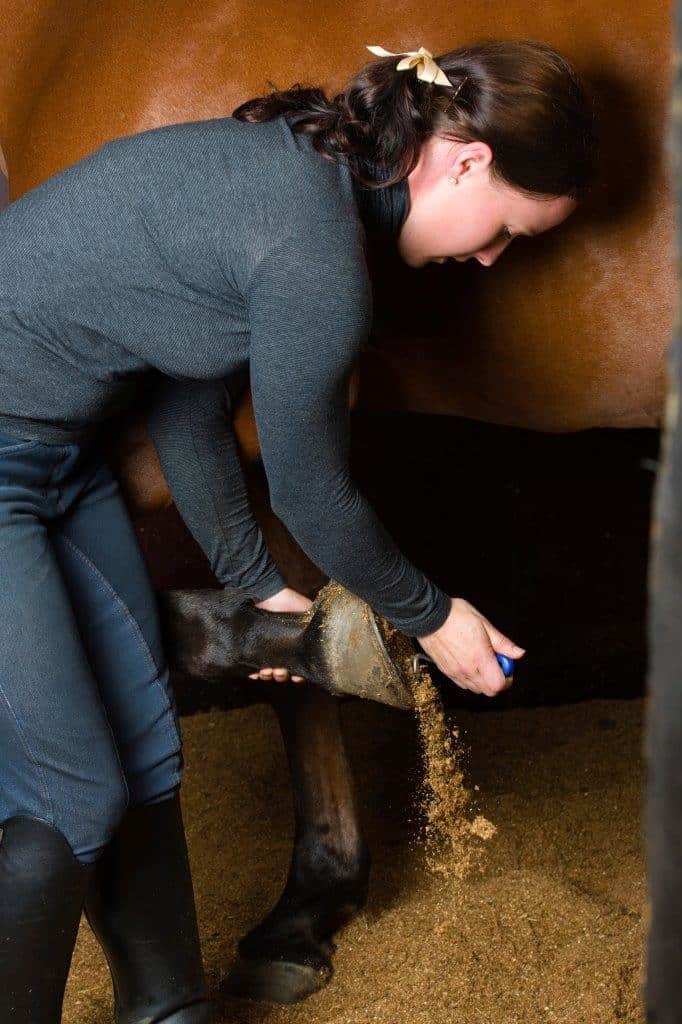
Hoof Pick
A hoof pick is used to clean debris, such as dirt, manure, or rocks, out of the bottom of the hoof, starting at the heel and working toward the toe. Routine hoof picking before and after riding and during regular grooming is important to help prevent or identify hoof problems, such as stone bruises and hoof abscesses. | Photo: Thinkstock
Share

The Horse: Your Guide To Equine Health Care is an equine publication providing the latest news and information on the health, care, welfare, and management of all equids.
Related Articles
Stay on top of the most recent Horse Health news with

















